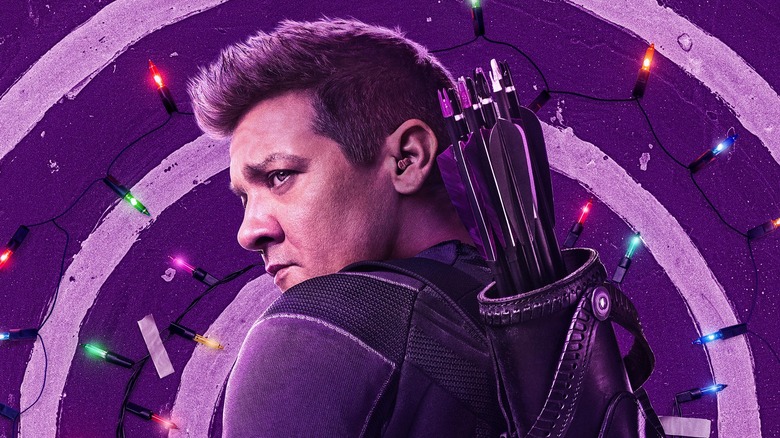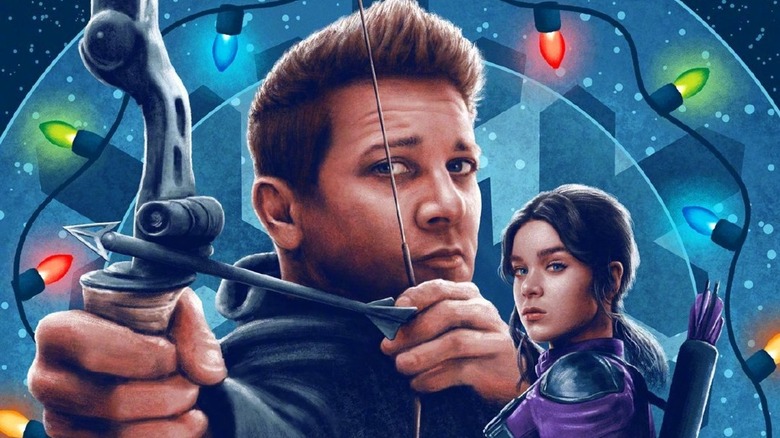
Over a decade after the MCU took over the blockbuster scene, Marvel has found itself having to deal with a whole new quandary -- which stories ought to be made for the big screen, and which should go straight to streaming on Disney+? To state the obvious, this is probably the definition of a good problem to have, but it's one that comes with all sorts of tricky ramifications to navigate.
As much as moviegoing habits have changed in recent years, even before the pandemic struck, there's no arguing against the built-in sense of prestige and importance that comes with movies that can only be seen on the big screen for a certain amount of time. On the other end of the spectrum, this would seem to imply that anything released on streaming services are to be considered "less than" in some way, despite how much streaming media has caught up to their big screen brethren in terms of scale and budget. This can lead to particularly unpleasant optics when the stories of characters portrayed by people of color, women, and other marginalized groups tend to be shuttled away to streaming platforms rather than receive the full red carpet treatment that event movies do.
Whatever the optics swirling around outside of these decisions may be, the reality -- according to Marvel, at least -- is that the choice between streaming and the big screen comes down to one simple factor: story.
The Digital Debate

Producer Trinh Tran has been involved with the MCU since its inception in 2008, as an assistant on "Iron Man." Since then, she has added producing credits with "Captain America: Civil War," "Avengers: Infinity War," "Avengers: Endgame," and now Marvel's "Hawkeye" series. In other words, Tran has enjoyed a front row seat to watching the Marvel universe dominate the big screen, enter the relatively short-lived Netflix experiment, and finally settle on the much more stable and crossover-friendly confines of the Disney+ platform.
In an interview with Cinema Blend, Tran revealed some insights into the process of how "Hawkeye" first started as a feature film before gradually evolving into its present form as a miniseries:
"We had started talking about Hawkeye as a feature. When Kevin (Feige) and I first started talking about what the story can be, we had brought Jeremy in and we said it was going to be a feature. We were figuring out and brainstorming what the storyline of Clint Barton is. And then, as we were doing the research, going through all the comics, we're introducing a new character in, Clint hasn't had other films, so this is the first time we're actually telling his story.
So there was so much content that I just felt like two hours isn't quite enough. And it was just perfect timing that Disney+ was launching that platform and was asking which characters should be brought over to that platform. We moved it over because I wanted that extra time, the six hours, to really develop his character, get (Kate Bishop) into the fold, as well as have enough time to have them bond and get that dynamic going so that there's a partnership that's built."
While this obviously applies to "Hawkeye" specifically, this reasoning can easily translate to Marvel's overall approach with their Disney+ shows to this point as well. Characters who have appeared in several MCU films but haven't really received their own spotlight like Clint Barton, Wanda Maximoff, Sam Wilson, and Bucky Barnes feel like natural choices to expand their stories on a medium that allows for more in-depth layering and development. Meanwhile, fan-favorites like Loki and a whole host of characters in "What If...?" get to live on, even after their on-screen deaths. Time will tell if this approach pays off for "Hawkeye," which premieres on Disney+ on November 24, 2021.
Read this next: The 15 Best Angelina Jolie Movies Ranked
The post How Marvel Decides Which Characters Get Films or Disney+ Shows appeared first on /Film.
0 Comments